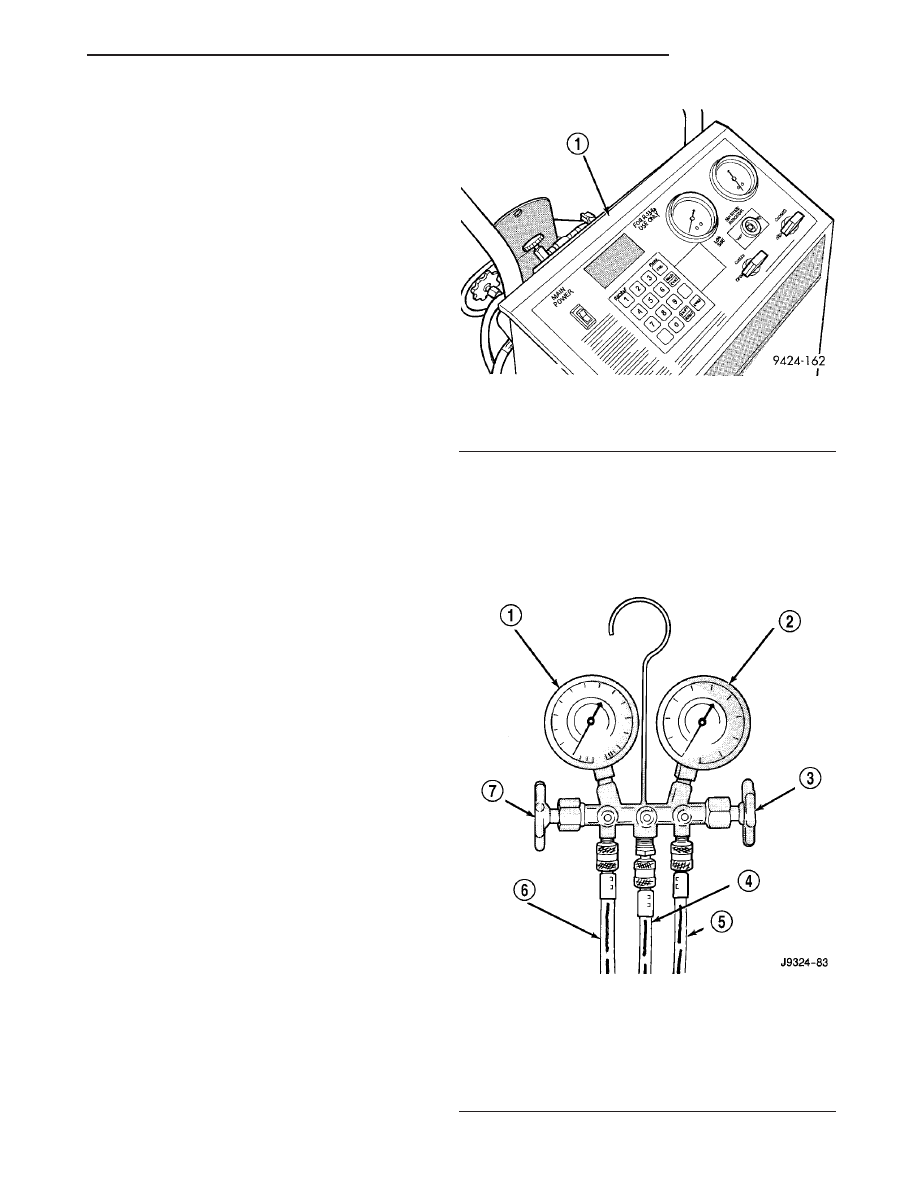Chrysler Sebring, Stratus sedan, Sebring Convertible. Manual - part 740

(2) Position the vehicle in a wind free work area.
This will aid in detecting small leaks.
(3) Bring the refrigerant system up to operating
temperature and pressure. This is done by allowing
the engine to run for five minutes with the A/C sys-
tem set to the following:
• Transmission in Park or Neutral with parking
brake set
• Engine idling
• Mode control set to the outside air position
• Blower control set to the high speed position
• A/C set to the ON position
• All windows open
CAUTION: A leak detector only designed for R-12
refrigerant will not detect leaks in a R-134a refriger-
ant system.
(4) Shut the vehicle Off and wait 2-7 minutes.
Then use an electronic leak detector that is designed
to detect R-134a refrigerant and search for leaks. Fit-
tings, lines or components that appear to be oily usu-
ally indicate a refrigerant leak. To inspect the A/C
evaporator for leaks, insert the leak detector probe
into the drain tube opening or an air outlet. A dye for
R-134a is available to aid in leak detection. Use only
DaimlerChrysler approved refrigerant dye.
STANDARD PROCEDURE
REFRIGERANT SYSTEM SERVICE EQUIPMENT
WARNING: Eye protection must be worn when ser-
vicing an A/C refrigerant system. Turn all valves off
(rotate clockwise) on the equipment being used
before connecting or disconnecting service equip-
ment
from
the
refrigerant
system.
Failure
to
observe these warnings may result in personal
injury or death.
WARNING: Refer to the applicable warnings and cau-
tions for this system before performing the following
operation (Refer to 24 - HEATING & AIR CONDITION-
ING/PLUMBING - WARNINGS) and (Refer to 24 - HEAT-
ING & AIR CONDITIONING/PLUMBING - CAUTIONS).
Failure to follow the warnings and cautions could
result in possible personal injury or death.
When servicing the A/C system, a R-134a refriger-
ant recovery/recycling/charging station that meets
SAE standard J2210 must be used (Fig. 1). Contact
an automotive service equipment supplier for refrig-
erant recovery/recycling/charging equipment. Refer to
the operating instructions supplied by the equipment
manufacturer for proper care and use of this equip-
ment.
A manifold gauge set may be needed with some
recovery/recycling/charging equipment (Fig. 2). The
manifold gauge set should have manual shut-off
valves, or automatic back-flow valves located at the
service port connector end of the manifold gauge set
hoses. This will prevent refrigerant from being
released into the atmosphere.
Fig. 1 Refrigerant Recovery/Recycling Station -
Typical
1 - R-134 REFRIGERANT RECOVERY MACHINE
Fig. 2 Manifold Gauge Set - Typical
1 - LOW PRESSURE GAUGE
2 - HIGH PRESSURE GAUGE
3 - VALVE
4 - VACUUM/REFRIGERANT HOSE (YELLOW W/BLACK STRIP)
5 - HIGH PRESSURE HOSE (RED W/BLACK STRIP)
6 - LOW PRESSURE HOSE (BLUE W/BLACK STRIP)
7 - VALVE
JR
PLUMBING
24 - 59
PLUMBING (Continued)